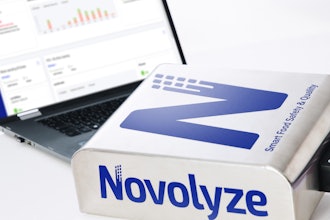
The industrial sector has experienced the fruitfulness of technological advancements since the onset of cloud computing. As of 2022, 94 percent of all enterprises are leveraging cloud services in one way or another. However, technological advancements also have a dark side. Some people leverage it to do malicious activities like data phishing and other cyber-attacks.
According to research conducted by Cyberthreat Defense, 86.2 percent of organizations were compromised by at least one attack. To safeguard yourself from cloud security threats, you need to be one step ahead, which means learning about them and preparing yourself in advance. Looking to 2023, here are the top cyber security threats to protect against.
Malware Infections
Cloud data services are basically a two-way sword. With data moving to and from the cloud, it opens doors for malware to easily infiltrate the system. Once infiltrated, it opens doors for even more serious attacks. Here are a few things you can do:
- Follow the zero trust model. As the name suggests, you must always assume that there is a breach and use multi-factor authentication to secure all access to the system.
- Network Segmentation. Separate your network into smaller networks interconnected with each other. During the malware attack, this will help you reduce your damages by affecting only a small segment of the network.
- Use security tools. Leverage security tools to detect malicious files and applications. Security tools constantly monitor your network and make you aware during security attacks or in case of any security flaw.
Misconfiguration
Even if you opt for popular cloud providers like AWS, Azure, or GCP, one of the most basic security threats occurs simply due to human negligence. Administrators often forget to properly set the cloud security setting when configuring the cloud.
For example, the admin accidentally allowed unrestricted outbound access, resulting in unauthorized applications communicating with the server. Everyone is well aware of the infamous real-life example of the Alteryx breach in 2017. Due to a small misconfiguration of the AWS S3 bucket, the online marketing firm released data from millions of households.
DDoS Attacks
Distributed Denial of Service, a.k.a DDoS, is a kind of attack where the attacker floods your server with malicious connection requests using a cluster of computers. The end result is - an overload of servers and denial of service to legitimate users. You can protect yourself from DDoS attacks by keeping a backup internet connection with a separate pool of IP addresses. This will come in handy when your primary connection is flooded with requests. You can also monitor your traffic and filter it by configuring your WAF firewall using custom rules.
Insecure Interfaces/APIs
APIs are helpful for businesses as they integrate different applications together under one platform by sharing data amongst themselves and executing pre-defined processes. Although used worldwide amongst most business applications, there is a grey area that can be abused by cyber attackers to exploit private details. You can follow these best practices for API security.
- Always rely on API built using a standard API framework, keeping security a prime concern.
- Check if the API is designed with tokens, signatures, encryption, and API gateways to ensure API security.
- Keep in mind that the document designed for customers can also be used to discover potential flaws for future exploitation.
Data Breaches
The biggest threat to any organization is the compromise of its sensitive information. The use of personal devices for doing office work increases the risk of data breaches. Such devices must be compelled to adhere to strict security guidelines. Another way by which this mishap can happen is by storing sensitive information like passwords as plain text. A cloud environment is heavily risky as it is a shared environment, and a single vulnerability can do catastrophic damage by making the whole cloud environment susceptible to future attacks.
Here are a few tips you can follow to save yourself from data breaches.
- Always encrypt sensitive data while storing it in a cloud environment.
- Store all your passwords in a secure location. Avoid storing them as plain text files.
- Give access to people based on their needs. Not everyone needs to have unrestricted access to your cloud environment.
The shift from traditional to cloud environments has given organizations tremendous benefits in terms of scalability and flexibility. However, the sensitive data that was in closed confinement till now gets exposed after migrating to a cloud environment. That’s why it becomes crucial to know about security vulnerabilities and be proactive in tackling them in the first attempt.
Hardik Shah is a front-end web developer at Simform, a leading web app development company. He leads large-scale mobility programs that cover platforms, solutions, governance, standardization, and best practices.






















